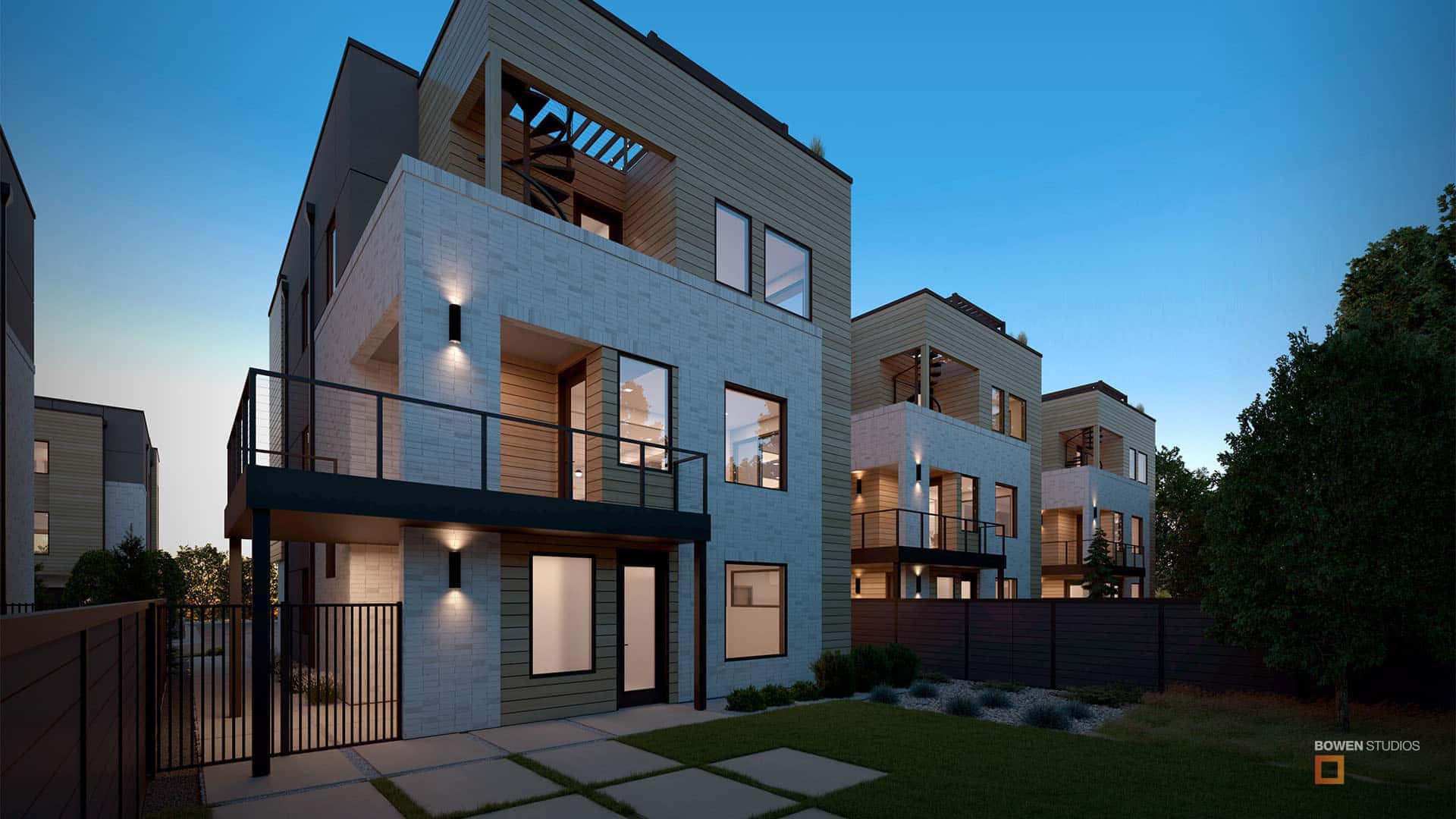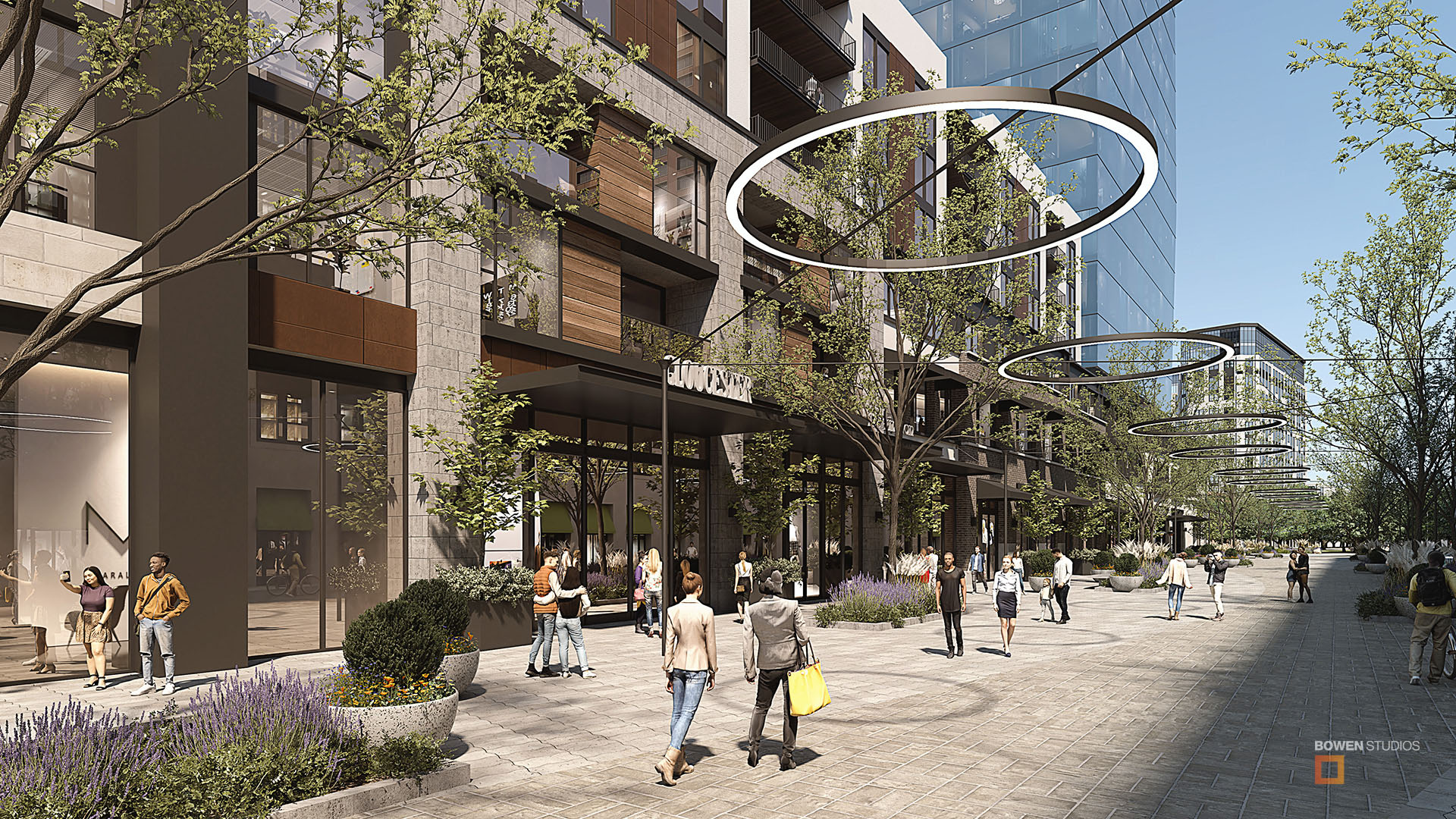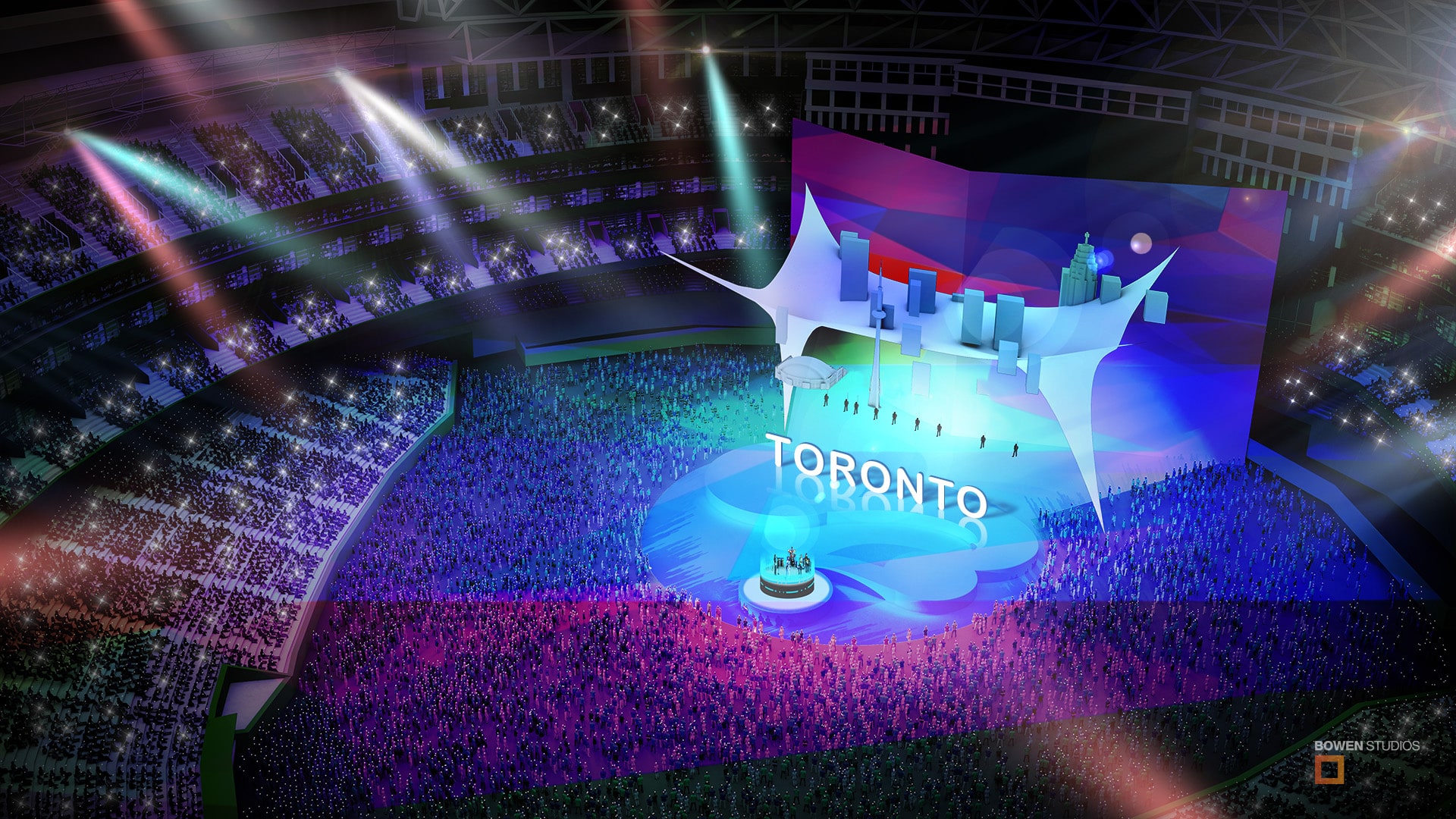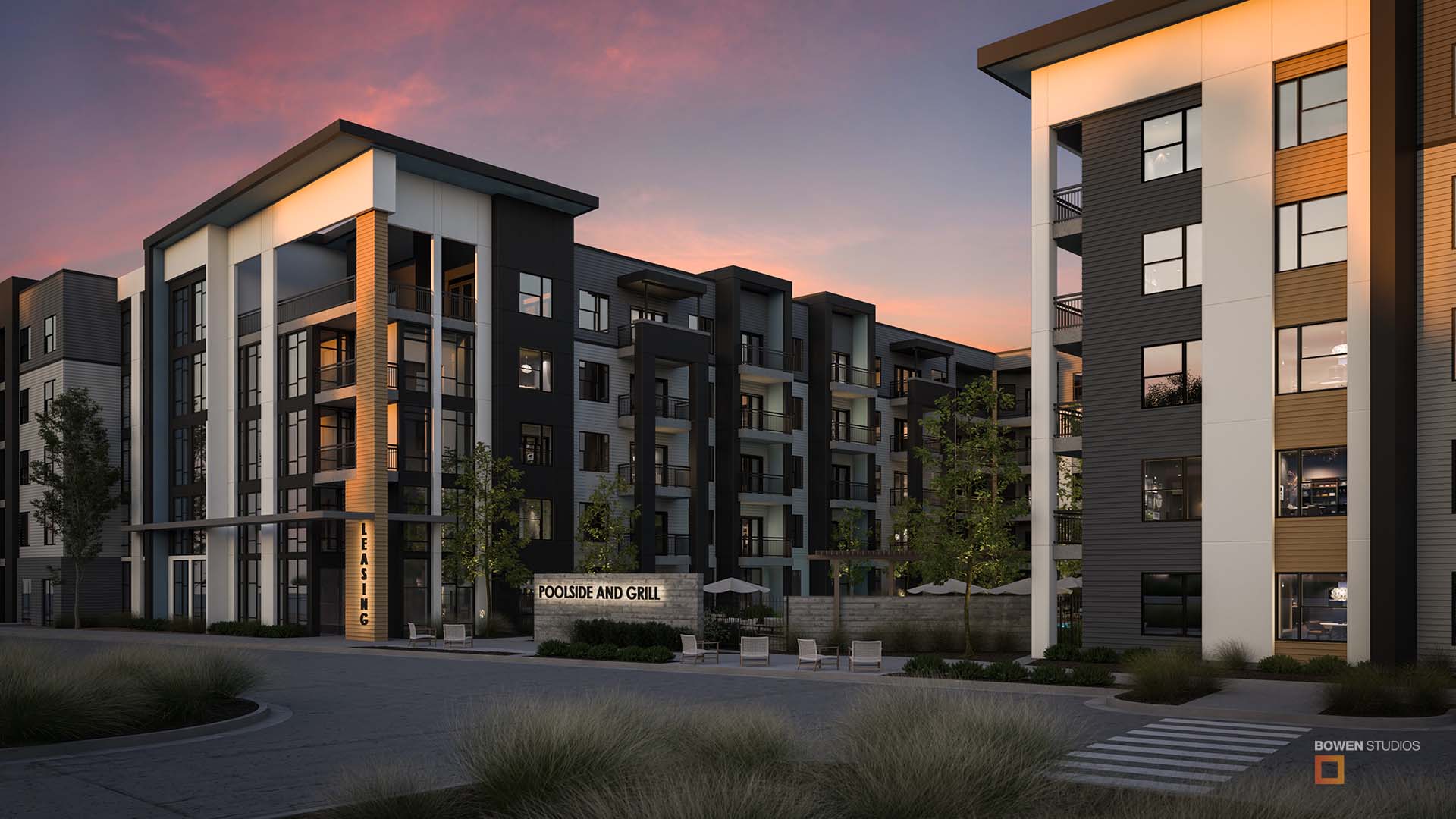Natural light is one of the most influential elements in architecture. The way sunlight moves through a space affects everything from comfort and aesthetics to energy efficiency and long-term sustainability. Today, architects and developers use advanced daylight and shade simulations to design buildings that are as efficient as they are beautiful.
At Bowen Studios, our 3D rendering services help architects and developers visualize daylight, materials, and shading in realistic conditions before a single wall is built. These simulations are not just about producing visually appealing renders. They are tools for measuring performance, reducing energy use, and ensuring a project meets the comfort and sustainability goals it was designed for.
Why Daylight Studies Matter
Daylight is more than a design feature. It directly impacts occupant wellbeing, circadian rhythm, and productivity. Well-lit spaces can improve comfort and even influence the mood and energy of those inside. From an environmental perspective, daylight reduces the need for artificial lighting and helps regulate indoor temperatures, which minimizes reliance on HVAC systems.
When used strategically, daylighting supports sustainability certifications like LEED and WELL by demonstrating measurable energy savings and occupant benefits. Considering these effects early in design ensures light quality and building performance evolve together rather than as separate priorities.
The value of daylight analysis extends across nearly every building type. In workplaces, well-balanced daylight contributes to employee alertness and reduces eyestrain. In schools, studies have shown that access to natural light can enhance concentration and academic performance. Healthcare facilities benefit as well, with controlled daylight improving patient recovery times and overall wellbeing. Even residential spaces see measurable gains in comfort and energy savings when window placement and material selection are informed by daylight data.
By quantifying how light interacts with architecture, designers can make informed decisions that merge sustainability with user experience. A small change in façade depth or glazing ratio can drastically improve thermal balance and reduce long-term operating costs, proving that daylight is both an environmental and economic asset.
From Visual Renders to Performance Simulations
Architectural visualization has evolved far beyond static imagery. While photorealistic renderings showcase design intent, performance simulations analyze how light behaves over time. High-fidelity exterior architectural renderings demonstrate how light and shadow interact with façades and glazing throughout the day, while interactive virtual tours allow teams to explore those lighting effects dynamically from every angle.
Understanding the fundamentals of architectural visualization helps teams recognize how advanced daylight simulations extend beyond visual storytelling into measurable design validation. Using professional tools like Radiance, ClimateStudio, and Ladybug Tools, visualization specialists can simulate sunlight paths, evaluate glare, and optimize daylight penetration with scientific accuracy. Research published in SAGE Journals highlights how daylighting standards increasingly rely on accurate simulation tools to meet performance and sustainability requirements, reinforcing the value of early, data-driven visualization in architectural design.
Modern daylight simulations draw on detailed project data, including site geolocation, time of year, material reflectance, and even local weather patterns. This data-driven approach allows architects to test multiple design iterations quickly and see how each decision affects illumination, comfort, and energy use. Rather than waiting until late-stage documentation, early simulation feedback informs massing, façade articulation, and glazing strategies from the start.
The advantage of merging rendering with simulation lies in how easily teams can visualize technical results. Seeing lighting data represented through lifelike imagery makes it easier for architects, developers, and stakeholders to align on design choices. It bridges the gap between analysis and aesthetics, ensuring that every visual decision also enhances building performance.
Simulating Sunlight and Shadows Across Time
Sun and shade simulations model how natural light moves across a building throughout the day and across different seasons. These studies reveal how building orientation, window placement, and façade elements affect both energy efficiency and comfort.
Through dynamic architectural animation, architects can visualize how sunlight shifts during different times of year. A well-oriented structure can reduce summer overheating while maximizing passive solar gain in winter. This data-driven approach helps teams make informed decisions that balance light, comfort, and energy savings long before construction begins.
Performance Metrics From Daylight Simulations
Daylight analysis provides quantifiable results that guide better architectural outcomes. Metrics such as daylight factor and daylight autonomy measure how effectively natural light reaches interior spaces. Glare analysis identifies problem areas that could affect comfort or visibility.
These results feed directly into energy models, improving load predictions and performance estimates. By integrating simulation data early in the design process, teams reduce guesswork, minimize costly revisions, and ensure that both form and function work in harmony.
Comfort and Occupant Wellbeing
Daylight shapes how people experience space. Balanced natural light enhances comfort, supports productivity, and creates a sense of openness. In offices, well-planned daylighting can reduce eye strain and support concentration. In homes, it can improve sleep patterns and emotional wellbeing.
Comfort is not just a result of design choices; it is part of the building’s identity. When visualized accurately, lighting becomes a powerful design tool that reflects a brand’s character, creates ambience, and adds measurable value to a project’s market appeal.
The Long-Term Value of Daylight Simulation
Daylight and shade visualization blend science and artistry to create architecture that performs as beautifully as it looks. Integrating daylight studies with realistic visualization helps architects understand how lighting decisions influence design performance and the broader impact of 3D renderings on architecture.
By incorporating these tools from the start, design teams reduce energy costs, improve comfort, and achieve stronger sustainability outcomes, all while elevating the visual and functional quality of the built environment.
Partner with Bowen Studios for Smarter Lighting Visualization
See how accurate daylight and shade simulations can elevate your next project. Partner with Bowen Studios to visualize, test, and refine designs for performance and beauty. Get a quote or contact us to begin your next visualization study.
Understanding how daylight affects design performance is only one piece of the larger architectural process. The following answers address common questions about using simulation and visualization in professional design work.
FAQ
1. What is daylight simulation in architecture?
Daylight simulation uses software to model sunlight behavior in and around buildings. It predicts how natural light interacts with materials, surfaces, and geometry to improve comfort, energy efficiency, and visual quality before construction.
2. Why are shade studies important for design?
Shade studies reveal how surrounding structures, landscaping, and the sun’s path influence building comfort and efficiency. They guide decisions on orientation, window size, and shading devices that help maintain balanced light throughout the day.
3. What tools are used for daylight and shade analysis?
- Radiance
- ClimateStudio
- Ladybug Tools
- Rhino and Revit plug-ins
4. How do daylight simulations support LEED certification?
Daylight performance metrics directly contribute to LEED credits by verifying that spaces achieve adequate daylight exposure while reducing the need for artificial lighting and excessive heat gain.
5. When should daylight simulations be performed in a project?
Daylight and shade analysis are most effective in early concept or schematic design stages, when orientation, glazing, and shading strategies can still be adjusted to improve overall building performance.





